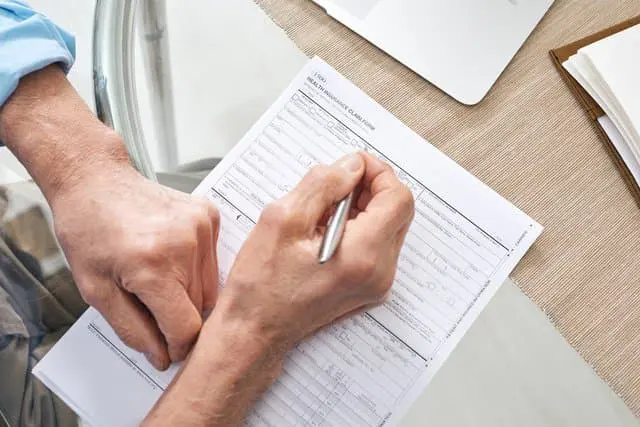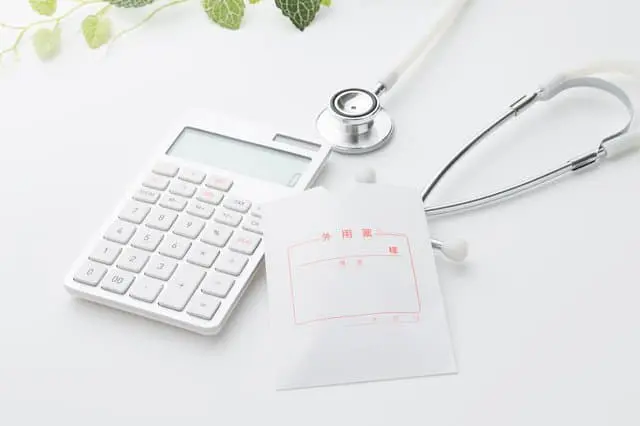Health Insurance In Japan: Types, How To Apply, And Premiums

Japan's national health insurance (NHI) is open to non-Japanese residents if they meet certain criteria. Learn more about the enrollment requirements and fees, discounts eligible to foreign students, and differences between NHI and the social insurance system.
Japan's Health Insurance System - An Introduction

Photo by Pixta
What should you do if you get injured or become sick during your stay in Japan? The medical insurance helps dispel your worries in the case of an unforeseen incident.
Before embarking on a trip, there's always the option of subscribing to a travel insurance service. However, did you know that Japan has insurance programs that non-Japanese residents can join?
If you currently reside in Japan, read on to learn important information about the medical insurance system.
Table of Contents
- 1. Types of Health Insurance in Japan / What is National Health Insurance (NHI)?
- 2. National Health Insurance Eligibility / Enrollment Process / Withdrawal
- 3. Insurance Premiums / Discounts for Overseas Students / Social Insurance
Types of Health Insurance in Japan
| Insurance Type | |
| National Health Insurance | Those not enrolled in social insurance, non-Japanese residents who meet certain criteria |
| Social Insurance | Company employees, part-time employees who meet certain criteria |
In Japan, there is a residence-based National Health Insurance (NHI) system. In order to receive medical care with ease, this compulsory system requires all citizens to be enrolled in public medical insurance. Long ago, a third of Japan’s population did not even have health insurance and this eventually evolved into a social issue.
However, that changed when the National Health Insurance Act was established in 1958. Now, anyone can receive treatments at the same fee whenever and wherever in Japan with an insurance card.
In 2000, Japan's insurance system was praised as being the best medical insurance system in the world by the World Health Organization (WHO). This world-class model supports one of the leading countries in life expectancy.
There are two types of health insurances in Japan: National Health Insurance (NHI) and Social Insurance (SI). Simply put, SI is for salaried workers in companies while NHI is for everyone else not eligible for employment insurance. Moreover, these insurances are not exclusive to Japanese residents. Non-Japanese residents, excluding those visiting on a tourist visa, are eligible to enroll.
So, who exactly can enroll in which insurance and when? Let’s take a closer look at the enrollment requirements, merits, and application process.
What is the National Health Insurance (NHI)?

Photo by Pixta
NHI is managed by the local government (prefectural administrations and municipalities). It is structured to reduce financial burdens by contributing to medical expenses from insurance premiums paid monthly by members.
| Medical Expenses Covered | Medical Expenses Not Covered |
|
・Everyday medical expenses (30% copay) ・A portion of meal costs when hospitalized |
・Medical examinations ・Vaccinations ・Normal pregnancy and childbirth ・Additional costs when hospitalized in a private room ・Cosmetic surgery ・Orthodontic treatment |
Those who enroll can seek care at any hospital and pay only 30% of the medical costs by presenting their insurance card. NHI also covers a portion of meal costs for hospitalized patients.
Additional merits of the NHI:
Individual co-payments will vary based on age and income.
Those not enrolled under any insurance plan will have to pay for the entire sum of medical expenses. However, as listed in the table above, not all medical treatments are covered by insurance (30% co-pay). Before receiving any medical treatment, you should confirm with the medical institution whether the treatment you're about to receive is covered by insurance.
National Health Insurance Eligibility

Photo by Pixta
Nearly everyone is eligible for NHI, excluding those registered under their company's health insurance or receiving welfare benefits.
If you are a non-Japanese resident—excluding overseas visitors on a tourist visa—included in the Basic Resident Registration System and not receiving company health insurance, you must enroll in Japan's NHI.
| Eligible | Ineligible |
|
・Those who are self-employed, freelancers, part-time employees, and not enrolled in company health insurance ・Foreign students ・Mid-to-long term residents (holders of a non-tourist visa for a stay exceeding 3 months) |
・People enrolled in company health insurance ・People residing in Japan for less than 3 months ・People with a temporary visitor or diplomat visa ・People over the age of 75 |
People over the age of 75 are ineligible for the NHI because they will be enrolled in the Latter-Stage Elderly Healthcare System.
Even those who intended to stay in Japan for less than three months can enroll in NHI if their visa is extended at the Immigration Bureau.
The following visa statuses are also accepted:
In some cases, those authorized to have their stay extending three months can enroll in the NHI. This rule applies even if their status indicates a stay of fewer than three months.
On the other hand, those ineligible for Japan's NHI are recommended to enroll in travel medical insurance provided by their home country.
Enrollment Process

Photo by Pixta
The enrollment procedure must occur within 14 days from your arrival date. Enrollment in NHI will begin from the time you arrive in Japan.
If the procedure is delayed, you will be required to pay insurance premiums starting from the month you became eligible for NHI (the month you arrived). The application process is handled at the municipal office where you registered as a resident. Make sure to bring the following documents to the National Health Insurance counter:
| Required Documents for Enrollment |
| ・Residence card or passport ・My Number card or a notification card |
Once your application is processed, you will be issued an insurance card (National Health Insurance Card: NHI Card). You can pick up the card in person at the municipal office or receive it by mail. Additionally, those who have moved must register their new address at the government office nearest your home within 14 days.
Withdrawal
When you return to your home country, move to a different municipality, or enroll in your employer’s health insurance, you are required to withdraw from the NHI. Return your insurance card by either mailing or visiting the government office where your application was processed.
| Required Documents for Withdrawal |
| ・Residence card ・Passport ・My Number card or a notification card ・National Health Insurance Card (NHI Card) |
If you'll be enrolling in your employer’s health insurance, please bring your employee health insurance card to the government office. The application deadline for withdrawal is within 14 days after you leave the country, transfer (move out), or are newly enrolled under your employer’s health insurance.
After residing in Japan for over a year, you are required to fill out forms to process your move out of the country at a government office. Even if you leave Japan, you will continue to be charged the National Health Insurance tax if you are still featuring as a registered resident. Please take note of this.
Insurance Premiums

Photo by Pixta
Insurance premiums are charged from the month you arrive in Japan. The amount is determined the following month after you've completed the enrollment process.
The insurance premium and payment date will be printed on a written notification mailed to you. If you fall behind in your insurance premium payments, you will be charged a fee for the delay. Make sure to pay your premium on time.
Additionally, the premium changes depending on your municipality of residence. There are also annual changes based on your income from the previous year and household size (number of family members).
During your first year, you will have to pay the standard fee because you have no previous income in Japan. Starting the second year, your premium will be determined in proportion to your income. By the way, an increase in the number of dependents (the people under NHI) through childbirth or marriage will result in your insurance premium to be increased accordingly.
Discounts for Foreign Students
Some municipalities reduce NHI fees for non-Japanese residents, including foreign students, with no previous income in Japan. The reduced fee differs depending on the municipality.
Additionally, the application for reduced rates and necessary documents are different in each municipality. You should first inquire whether there are reduced rates or exemptions for insurance premiums at your government office.
Insurance premium payments must be paid by yourself. Pay by either taking the payment slip mailed from the government office to a bank, to a convenience store, or in-person at a government office. There's also the convenient option of doing a domestic bank transfer.
Long-Term Care Insurance System (Age 40 – 64)

Photo by Pixta
Japan also offers the Long-term Care Insurance System. This insurance covers expenses for those requiring nursing care.
For this reason, people between the ages of 40 to 64 are required to pay long-term care insurance fees in addition to NHI premiums. Those over the age of 65 have their fees deducted in advance (automatically paid from a balance) from their pension. Long-term care insurance fees also vary depending on municipalities and income.
What is the Social Insurance (SI/Employee Insurance)?

Photo by Pixta
Social Insurance is managed by the Japan Health Insurance Association (JHIA). All Japanese companies belong to this association. Thus, the system is structured so that employees pay their insurance premiums to the association through their companies.
Those eligible include government workers, office workers, their dependents, and part-time workers who meet specific criteria.
The main benefits of enrollment are the same as the NHI. By presenting your insurance card at a hospital, you will generally be responsible for 30% of the medical fee. Also, the lump-sum allowance for childbirth is the same at 420,000 yen.
However, the enrollment, withdrawal, and insurance premiums are different from the NHI.
Enrollment and Withdrawal
Your company will handle the enrollment procedure. Unlike the NHI, you don't need to process your application at a government office. Also, you will receive your insurance card through your company. When you quit your company and withdraw from SI, simply return your insurance card to your employer.
Insurance Premiums
The insurance premium is borne equally between the employer (company) and employee by 50%. This amount is determined based on your income in April, May, and June. Since the payment is deducted in advance (automatically paid from a balance) from your salary, you won't need to make payments yourself.
Similar to the NHI, people between the ages of 40 to 64 must pay for long-term care insurance fees from their salary. The company is responsible for 50% of long-term care insurance fees.
For NHI, your insurance premium will increase if the number of enrolled dependents increases through childbirth or marriage. However, in the case of SI, the insurance premium remains the same regardless of dependents increasing. For this reason, monthly insurance premiums are a better value for SI members than NHI members.
Employees’ Pension Insurance
In addition to health insurance, SI includes Employees' Pension Insurance. First off, the pension is a lifetime security system for the retired, disabled, and deceased. All Japanese citizens aged 20 to 59 must enroll in the National Pension plan.
The Employees’ Pension is paid in addition to the National Pension. In other words, those enrolled in SI will receive security benefits after retirement.
Get Health Insurance for Safer, Secure Living!

Photo by Pixta
What should you do if you're injured or become ill? What about when medical fees are more expensive than you imagined?
Japan's medical insurance system mitigates these worries. There's also a Japanese saying that goes, "There's no need to worry if you are prepared." Just as people prepare for a rainy day, take advantage of your health insurance benefits to ensure a safe, secure stay in Japan!
Read also
Main image by Pixta









































![[Yamanashi/ Hokuto City] 4 Hot New Spots Opening in 2026](https://resources.matcha-jp.com/resize/720x2000/2025/12/12-252747.webp)



